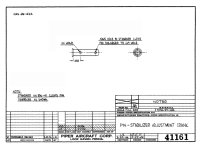Hyway
MEMBER
Sydney Australia
Hi Guys taxied out yesterday and in the run up bay the trim handle came off in my hand, taxied back in and looked on the floor for the parts, it consisted of a spring a cover plate and a very small pin. Found them all and reassembled after 10 minutes took off all went well.
my question is the pin took me 3 goes to get it in, it went straight through the holes in the handle, what holds the pin in place? Is it the cover plate and spring? I would of thought it would of been some kind of fastener instead of a pin same size from top to bottom.
it was a 1956 Piper SuperCub
Mat
my question is the pin took me 3 goes to get it in, it went straight through the holes in the handle, what holds the pin in place? Is it the cover plate and spring? I would of thought it would of been some kind of fastener instead of a pin same size from top to bottom.
it was a 1956 Piper SuperCub
Mat





